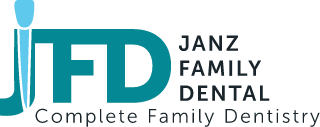The risk for having a tooth injury is heightened when playing sports—and not just high-impact sports like hockey or boxing.
If you or your children participate in any kind of athletic activity, it’s important to know what to do if a tooth breaks or chips.
What to do if you suffer from a tooth injury
If a tooth is cracked, chipped or broken, it’s important to see your dentist as quickly as possible. Before heading to the dental clinic, you can take over the counter pain medication to ease any pain. If the injured tooth is now sharp and jagged, cover it with a bit of sugar-free gum to protect your lips and tongue from getting cut.
How the dentist will fix a chipped or broken tooth
If the tooth is broken or cracked, your dentist has different methods to repair it.
Filling and bonding
Your dentist may fill the area with the same type of materials used for filling cavities. This is only used for small chips on teeth that aren’t visible when you smile. If the tooth that’s damaged is one that’s visible when you smile, the dentist will probably use dental bonding, a tooth-coloured composite resin. This involves the dentist first roughening the surface of the tooth with a liquid or gel, and then applying an adhesive followed by the resin. They then shape the tooth and set it using an ultraviolet light.
Other cosmetic options
Sometimes fillings or bonding aren’t the best option for fixing a chipped or cracked tooth and dentists may suggest other procedures. For example, if the tooth’s enamel is visibly cracked but isn’t at risk for further damage, they may use veneers to restore the look of the tooth. If the tooth has suffered too much damage or is already decayed, they may cover it with a crown or replace it entirely with a dental implant. If you or your child has a broken or chipped tooth, it’s important to get to your general, cosmetic or kids dentist as soon as possible (within a 24 hour period is recommended). A broken tooth is a dental emergency and responding quickly will allow your dentist to more effectively repair your smile. For priority care during an emergency, the dental clinic at Janz Family Dental is available. We’re located in West Edmonton and are always happy to accept new patients. Call us today to make an appointment or visit us at our clinic for immediate attention.

